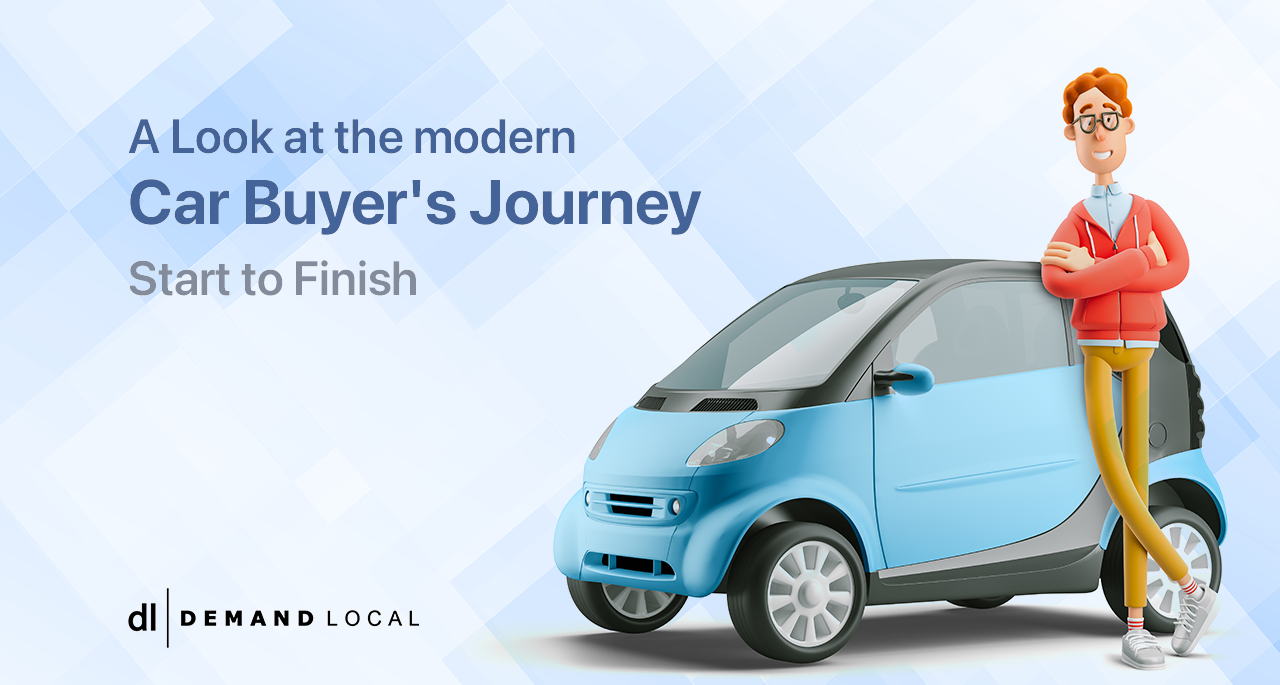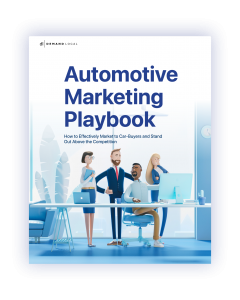Driving sales starts with knowing your customer and what they’re looking for. No matter who you’re marketing to, there are some commonalities that apply to nearly every buyer. In this blog post, we will take a look at the car buyer’s journey and show you how to use the buyer’s perspective to your advantage. Allowing you to devise a sound digital marketing strategy that resonates with the buyer and lets you drive more business. This is part of a multi-part blog series, with the first post covering the car buyer’s journey. Along this series, we’ll go into the detail of several tactics, and give you tips that can help you target individual buyers and convince them to choose your business.
Start to Finish
Once someone decides they want to buy a car, it takes them an average of 2.5 months to close the deal. However, it’s not unusual for the process to last 4 months or more. And while there are different stages to the journey, almost 90% of it is digital. Customers look for information on their smartphone, tablet, or computer either at home or on-the-go.
Exploratory Phase
During the exploratory phase, the car buyer is primarily turning to search engines to figure out answers to questions like: Should I get a sedan or SUV? What type of ratings does this vehicle get? What are the dealership’s reviews? What is the budget ceiling I want to set? What are my financing options? Which dealership is offering the best deal?
At this stage, customers are visiting manufacturer websites (e.g., Ford.com, etc.) to read more about each model and compare details. However, they’re also paying close attention to car and dealership review websites such as Cars.com or Edmunds.
Consideration
When they dive deeper into the funnel and move to the research stage, they might view video reviews of cars on YouTube. As they get closer to the purchase stage, they focus on the websites of local dealerships and check out the specific Vehicle Details Pages (VDPs) of the inventory they’re interested in.
Research
By now they are probably following the social media page of different car dealerships to stay up to date. They might also search for their preferred car using hashtags on Instagram. The goal when they’re on Instagram or other types of social media is to see what other people are sharing and to decide if that content is worth trusting.
Purchase
Finally, customers research financing options and car insurance rates. It’s only when they’ve taken great pains to check off the details that they’re ready to test-drive. So for most dealerships, by the time they’re ready to borrow the keys, the consumer has already made up their mind in many ways.
As you can see, their journey is really sprawled across the entire digital ecosystem. By the time your sales team reaches out to the customer, that customer has already invested a lot of time and energy to reach you across multiple touchpoints. It only makes sense to devise a full-funnel strategy and spread your budget across different channels for sustaining successful marketing campaigns.
Like what you’re reading? Get the full eBook here.
(This blog post is an excerpt from the eBook ‘Automotive Marketing Playbook’)





